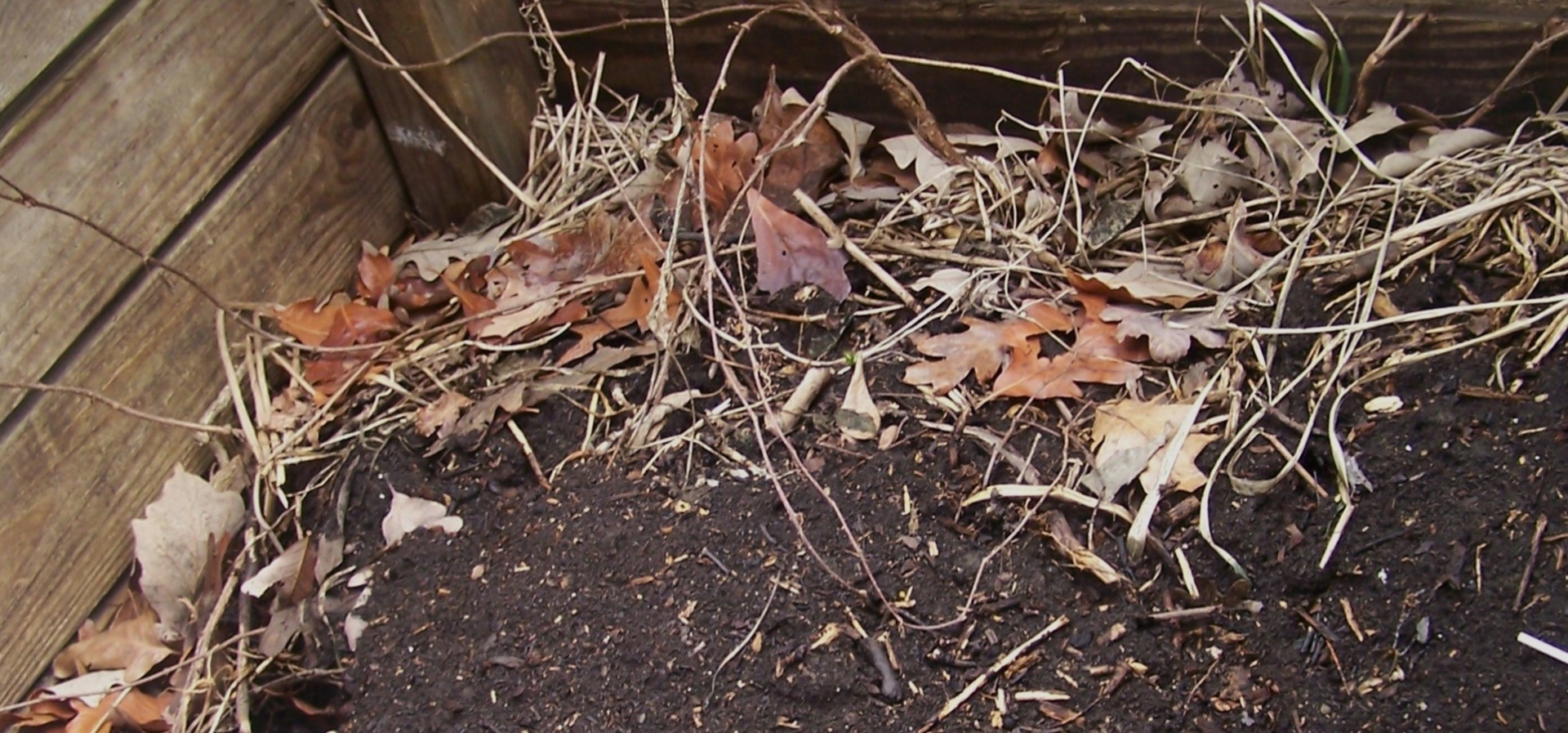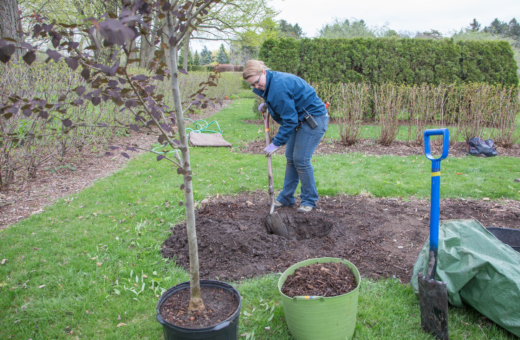May 29, 2024
Making compost is an easy way to improve your garden, help your plants flourish, reduce your environmental impact, and save money.
Compost is basically just yard waste that’s breaking down through natural biological processes. These processes are the same as those that build up and enrich soil all over the world, from tropical rainforests and Midwestern prairies to Arctic tundra.
“When we heap plant matter up into a pile in our yards, the process just happens faster,” said Sharon Yiesla, plant knowledge specialist in the Plant Clinic.
Adding compost to a garden bed will help plant growth by loosening the soil and making it drain better. Spreading it over the soil around a tree helps the roots grow underground. Compost increases the populations of healthy soil organisms that support plants, such as helpful bacteria, fungi, and earthworms. And the nutrients from dead plants will stay in your yard to be reused by living plants.
Composting is thrifty, since all the materials are free. It’s also a sustainable choice, since it saves on emissions from trucking landscape waste around.
Yard waste for compost can be any part of a plant, such as leaves, twigs, stalks, dead flowers or pulled weeds. “It can be whatever you cleaned up in your garden,” Yiesla said. You can start a compost pile with whatever yard waste you have at any time of the year.
Some kitchen waste can be added to the compost, including coffee grounds and the cores and peels of fruits and vegetables. Eggshells can also be composted, but meat, fat, oil, and animal waste should not be added to compost. For details on what to put in the compost and other advice, see the Arboretum’s web page on composting.
“A good compost pile will be mostly yard waste, with maybe some kitchen scraps mixed in,” Yiesla said. “It needs a mixture of materials to support a variety of organisms.”
Most important, the mixture should include both carbon-rich and nitrogen-rich plant materials. Carbon-rich materials are generally “old, brown, dead things,” Yiesla said, such as fallen leaves, dead plants, old perennial stalks, or straw from Halloween decor. Woody branches will work, but they should be cut up into small pieces and they will take a long time to decay.
In most Midwestern yards, trees provide plenty of autumn leaves that form a carbon-rich foundation for compost. Experienced gardeners often stash extra leaves away in fall to feed into the compost pile all through the year.
Nitrogen-rich materials are “fresher, green things,” Yiesla said, such as grass clippings, bloomed-out annuals from containers, leafy twigs from pruning, vegetable peelings, and weeds (as long as they don’t have mature seeds).
For a new compost pile, mix in a shovel full of garden soil, which will contain all the bacteria, fungi, and other microorganisms needed to begin decomposition. There’s no need for compost starters or other additives.
A general rule is that smaller pieces will decay faster than larger ones. For example, shredded leaves will turn to compost in fewer months than whole ones. Small twigs will take fewer years to break down than big sticks.
A simple heap works fine, but a bin will contain the compost and keep it presentable. Many municipalities require compost to be contained in a bin to deter animals. You can make a bin or buy one. Be sure it’s well-ventilated so the composting organisms get the air they need.
Any amount of organic matter will eventually break down, but a larger pile will hold in more warmth and moisture and its materials will decay faster. Aim for a compost pile that is at least 3 feet high and wide.
In dry weather, you may need to water the compost pile to keep it moist—about as damp as a wrung-out sponge, Yiesla said. Turning it with a shovel or garden fork every few weeks will mix it up and let oxygen in to improve decomposition.
If a compost pile starts to smell, it’s because not enough oxygen is reaching the composting organisms in the interior. The solution is to turn the pile to let air in.
When compost is ready to use after a few months, it will be dark brown and crumbly, with an earthy, pleasant smell. Usually, the center of the pile breaks down first. Harvest the finished compost and return any materials that aren’t yet decomposed to the pile to keep decaying.
“There are many uses for compost,” Yiesla said. Use it as a surface mulch around trees, shrubs and perennials, or scatter it on the lawn to improve the soil. Dig it into the soil of a new planting bed, or add some to the hole when planting a new perennial.
As you continually make and add your homemade compost to your garden soil, you will steadily improve it, just as nature has been making and improving soil for millions of years.



